Sweet potatoes are a kitchen staple in many households - including mine! This versatile root vegetable can be incorporated into a variety of dishes, from sweet desserts to savory mains, making them a fantastic cooking essential. But how to tell if a sweet potato is bad?
Just like any other produce, sweet potatoes can spoil over time and it's not always easy to tell whether a sweet potato is still fine to consume. This comprehensive guide will show you how to spot if a sweet potato had gone bad or not, what to do with spoiled sweet potatoes, and how to store them properly to prolong their shelf life.
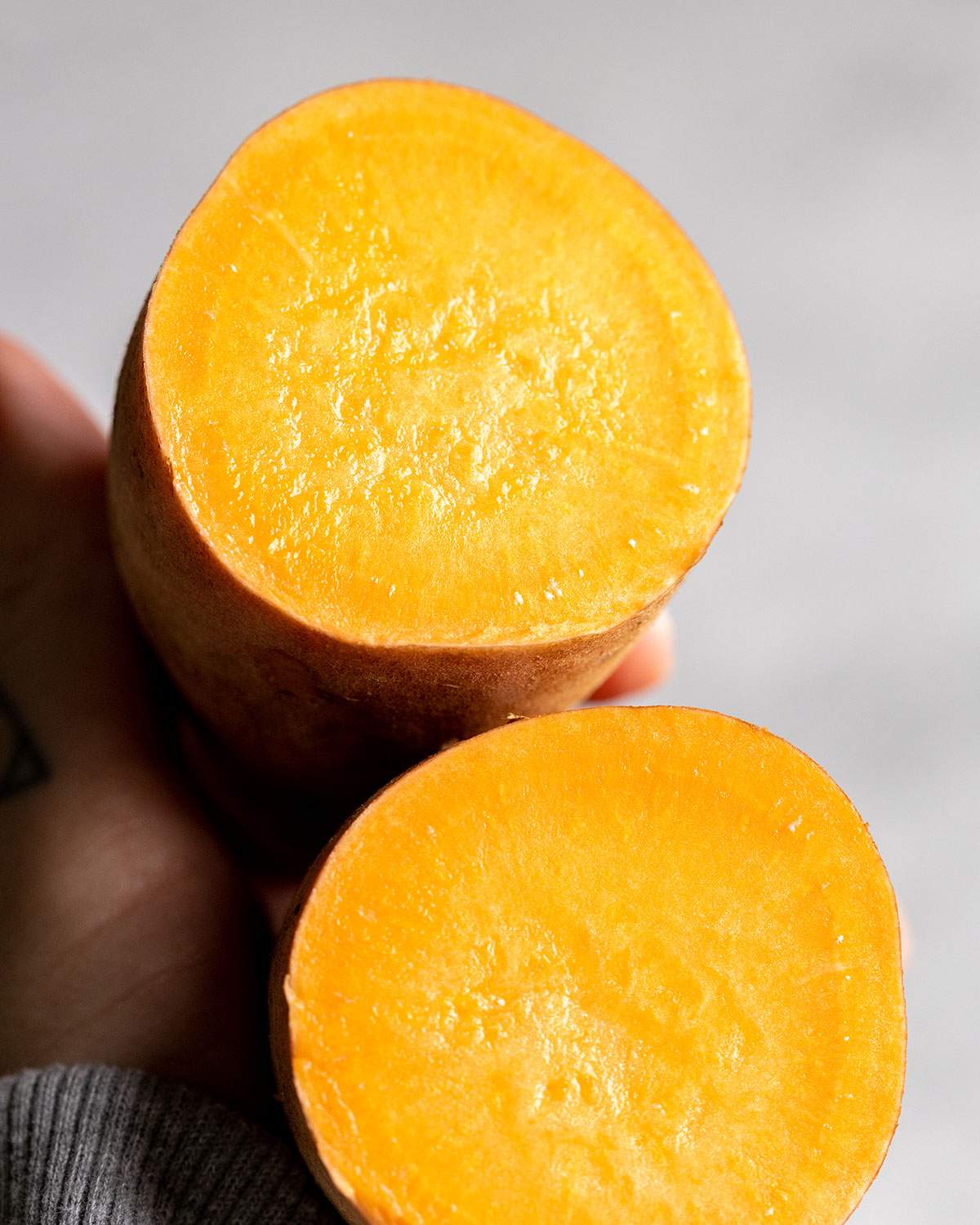
Jump to:
📜 A Brief History of Sweet Potatoes
Sweet potatoes have been enjoyed by humans for thousands of years. Originating from Central and South America, they made their way to Europe in the 16th century and eventually became a hit worldwide. You've probably enjoyed them in various dishes, given their yummy taste and high nutritional value.
What's especially great about sweet potatoes is how they are easily adaptable and can be used in various dishes and cuisines, both sweet and savory.
In North America, sweet potatoes are a staple in many traditional dishes. They can be mashed, baked, boiled, or fried, and are even used in pies and other desserts. The natural sweetness of sweet potatoes adds a unique flavor to various dishes, making them a versatile ingredient in the kitchen.
🍠 Types of Sweet Potato
Sweet potatoes come in a variety of different types, each with its own unique flavor, texture and color. The three most common types are orange, white, and purple sweet potatoes.
Orange sweet potatoes are widely available and are known for their sweet, creamy flavor. White sweet potatoes have a drier texture and are less sweet, while purple sweet potatoes are the sweetest of the three and have a more dense texture.
It's worth experimenting with different types of sweet potatoes to add a variety of flavors to your recipes and see which you like best.


🌿 Health Benefits
Sweet potatoes are not only delicious but also a great source of nutrition. They are a high-water content vegetable that is high in fiber, potassium, and vitamins A and C as well as vitamin B6.
Additionally, sweet potatoes are believed to help boost brain function and the immune system. They are also lower in calories and have a lower glycemic index than regular potatoes, making them a great option for those who are watching their blood sugar levels.
🍲 What You Can Do with Sweet Potatoes
These spuds are incredibly versatile! You can bake them, mash them, fry them, or even turn them into desserts like pies or brownies. Sweet potatoes have a natural sweetness that adds a lovely twist to both sweet and savory dishes.
If you're looking for some inspiration, try some of these sweet potato recipes!
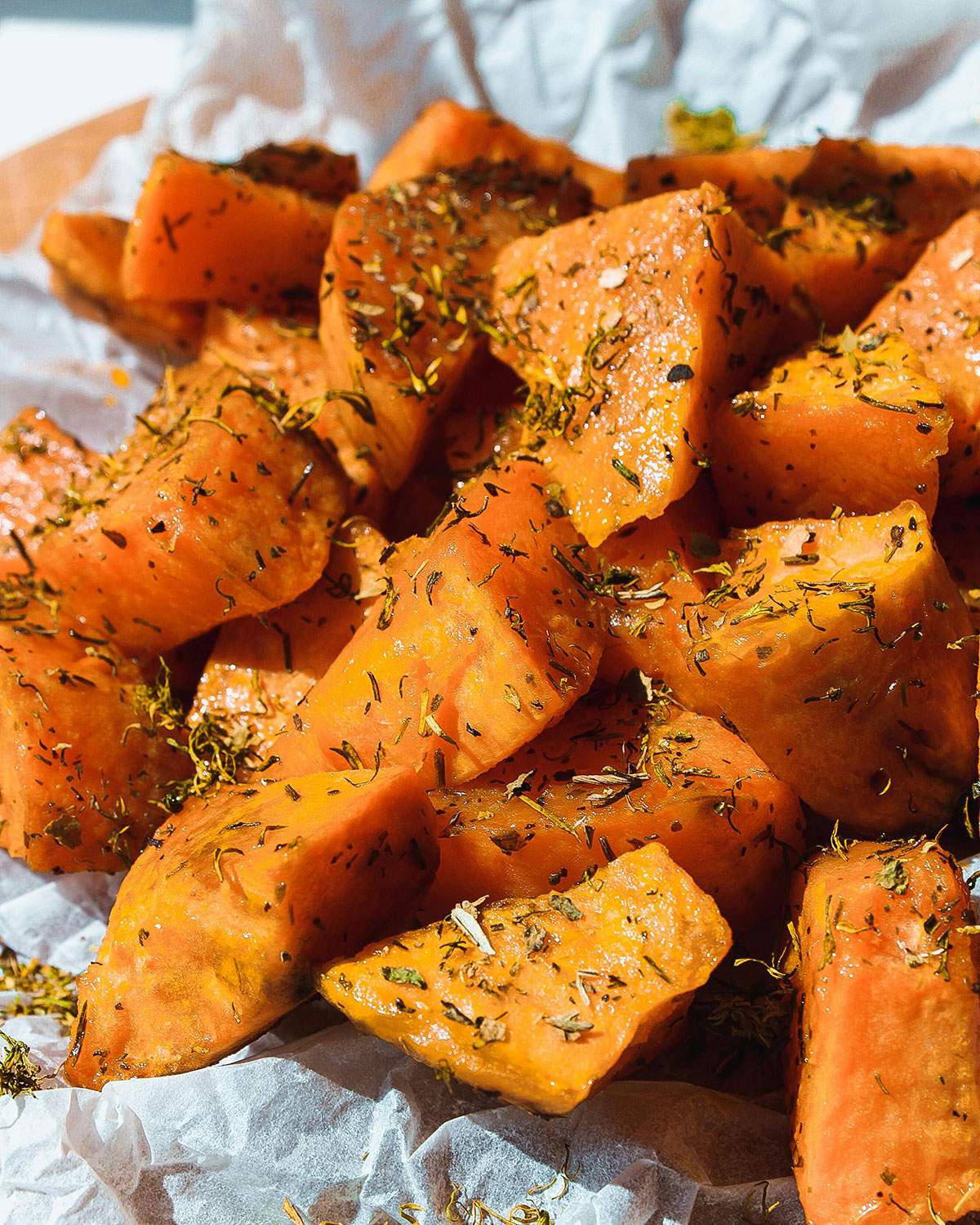
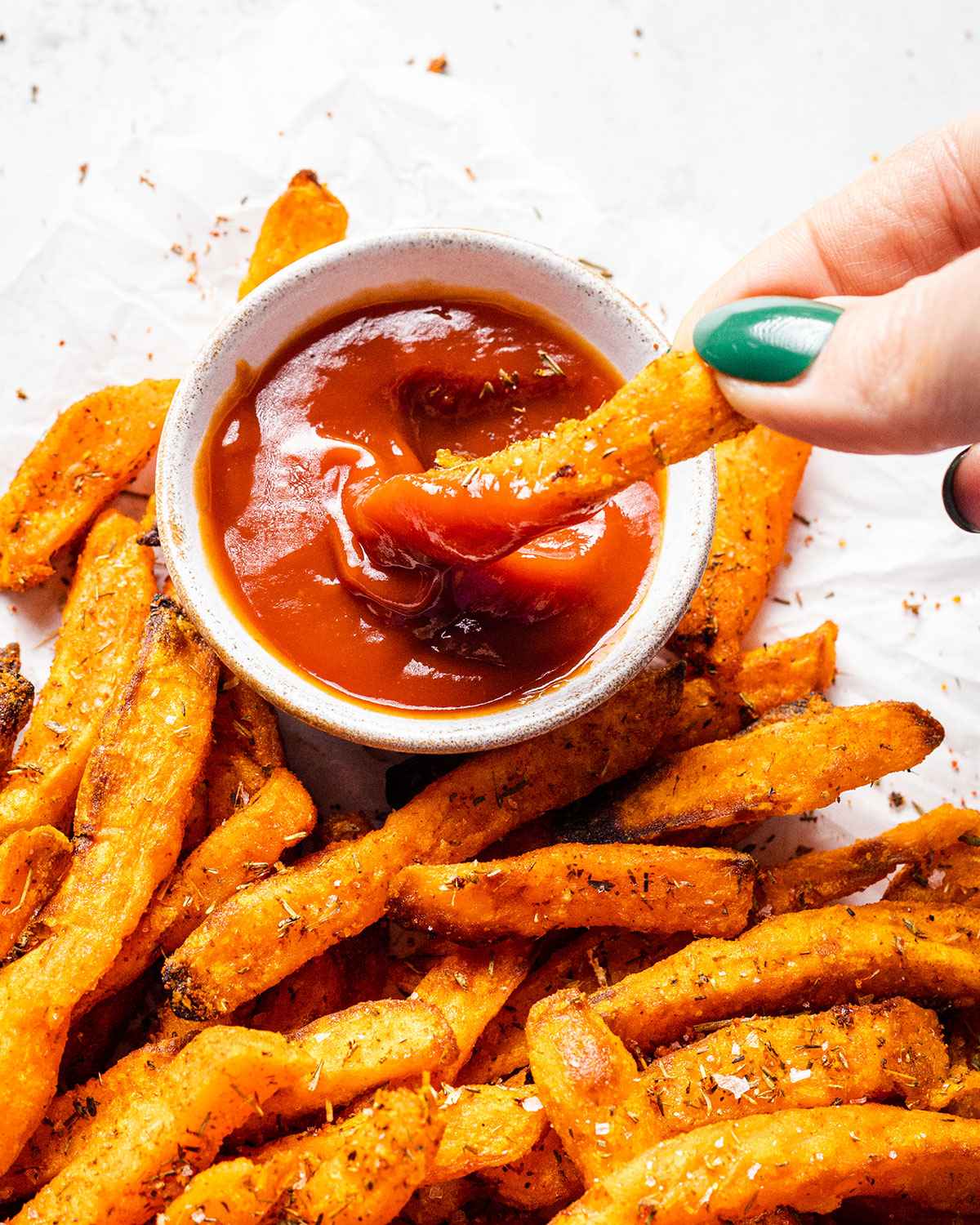


🔎 Signs of a Bad Sweet Potato
It's essential to know the first signs of spoilage to avoid consuming rotten sweet potatoes.
The first thing to check is the skin of the sweet potato. Good sweet potatoes should have a firm skin without any cracks or brown spots. Any discoloration on the skin of sweet potatoes is a sign of spoilage. Additionally, the presence of white substance or white sap on the skin is a sign of harmful bacteria.
Here are some additional signs that indicate your sweet potato has gone bad:
- Softness: A spoiled sweet potato often becomes mushy or develops soft spots. If it feels mushy or has soft spots, it's a no-go.
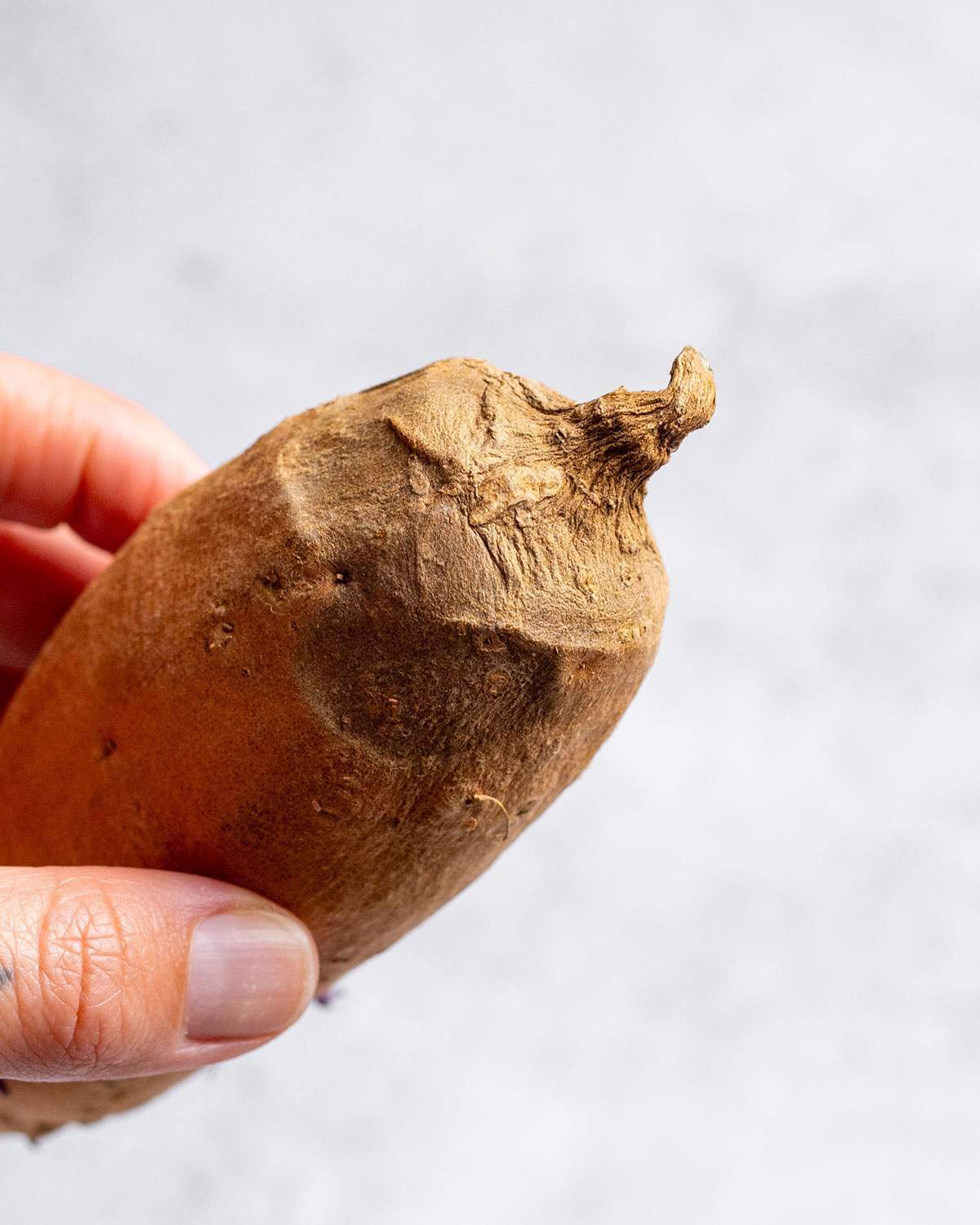
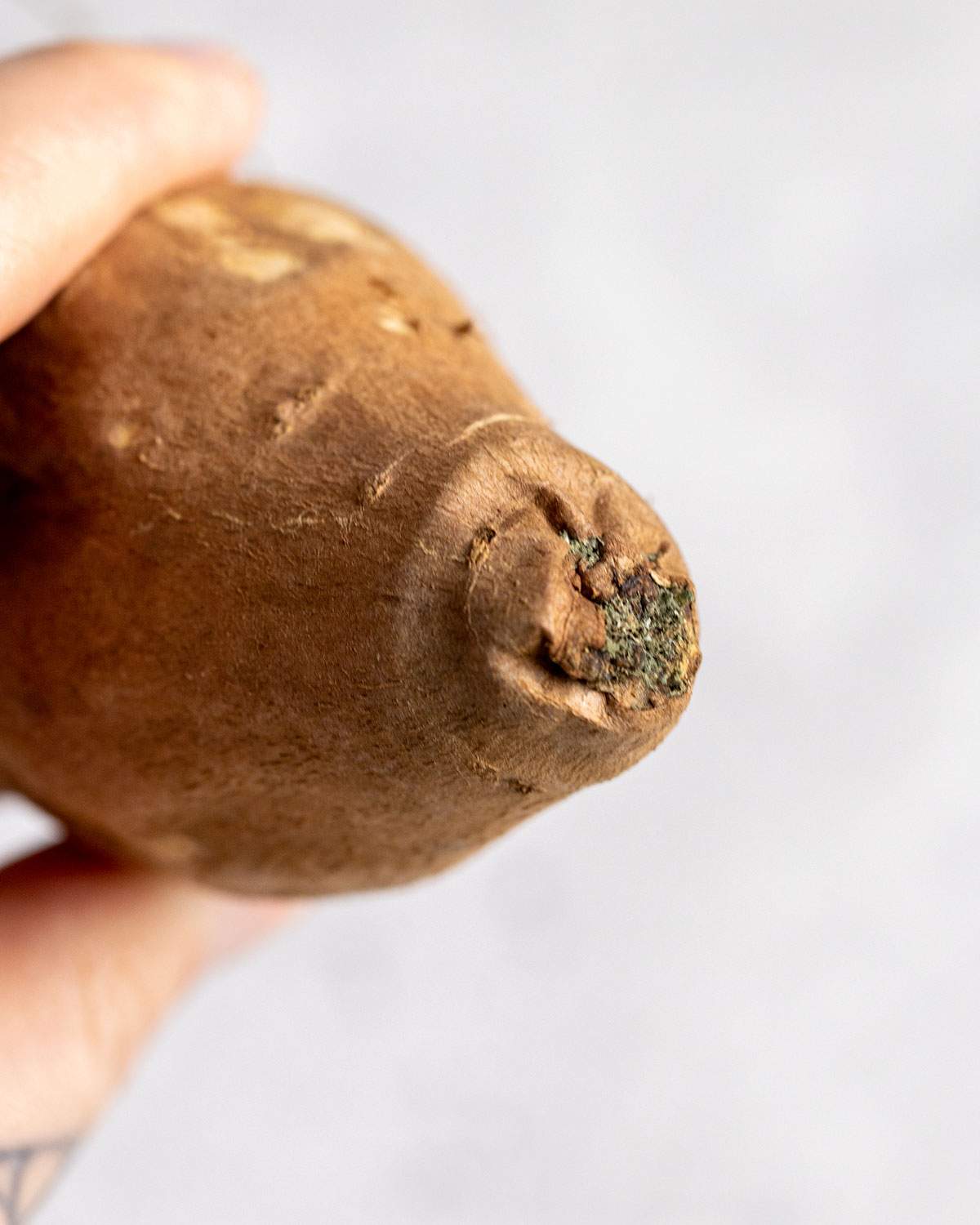
- Wrinkles or Shrinking: Wrinkles or shrinkage are indications of dehydration or rotting.
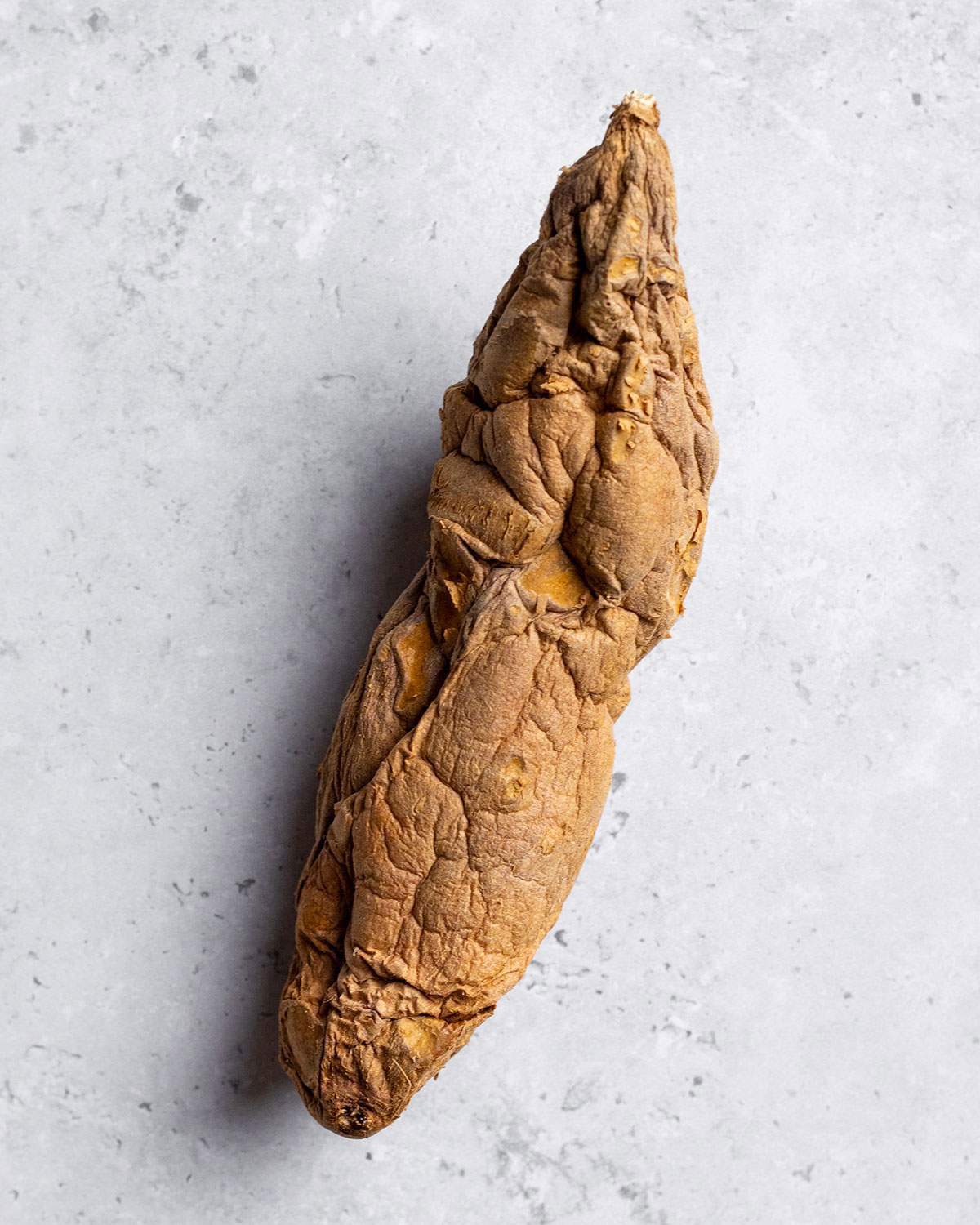
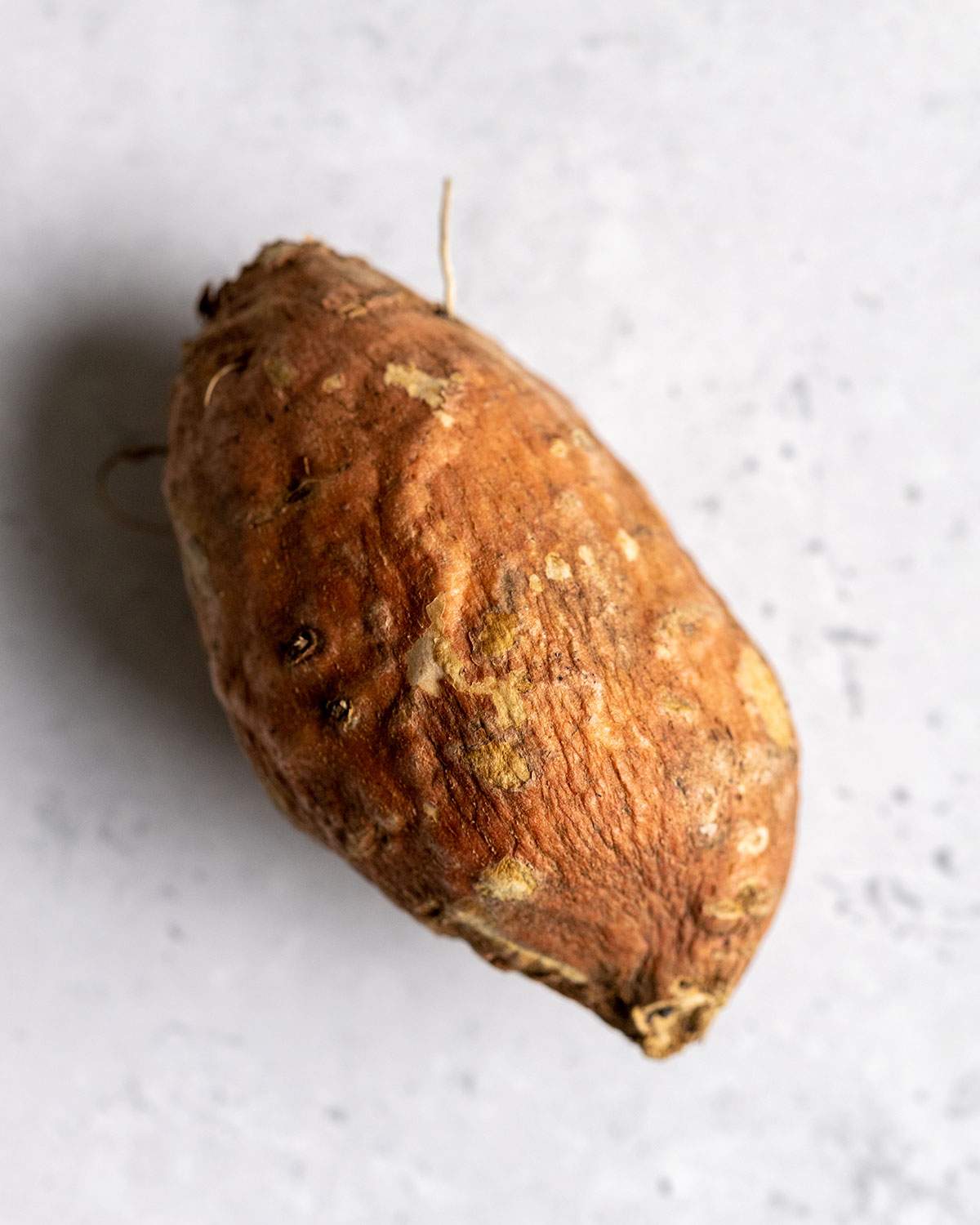
- Discoloration: Spoiled sweet potatoes may develop dark or white spots or change color.
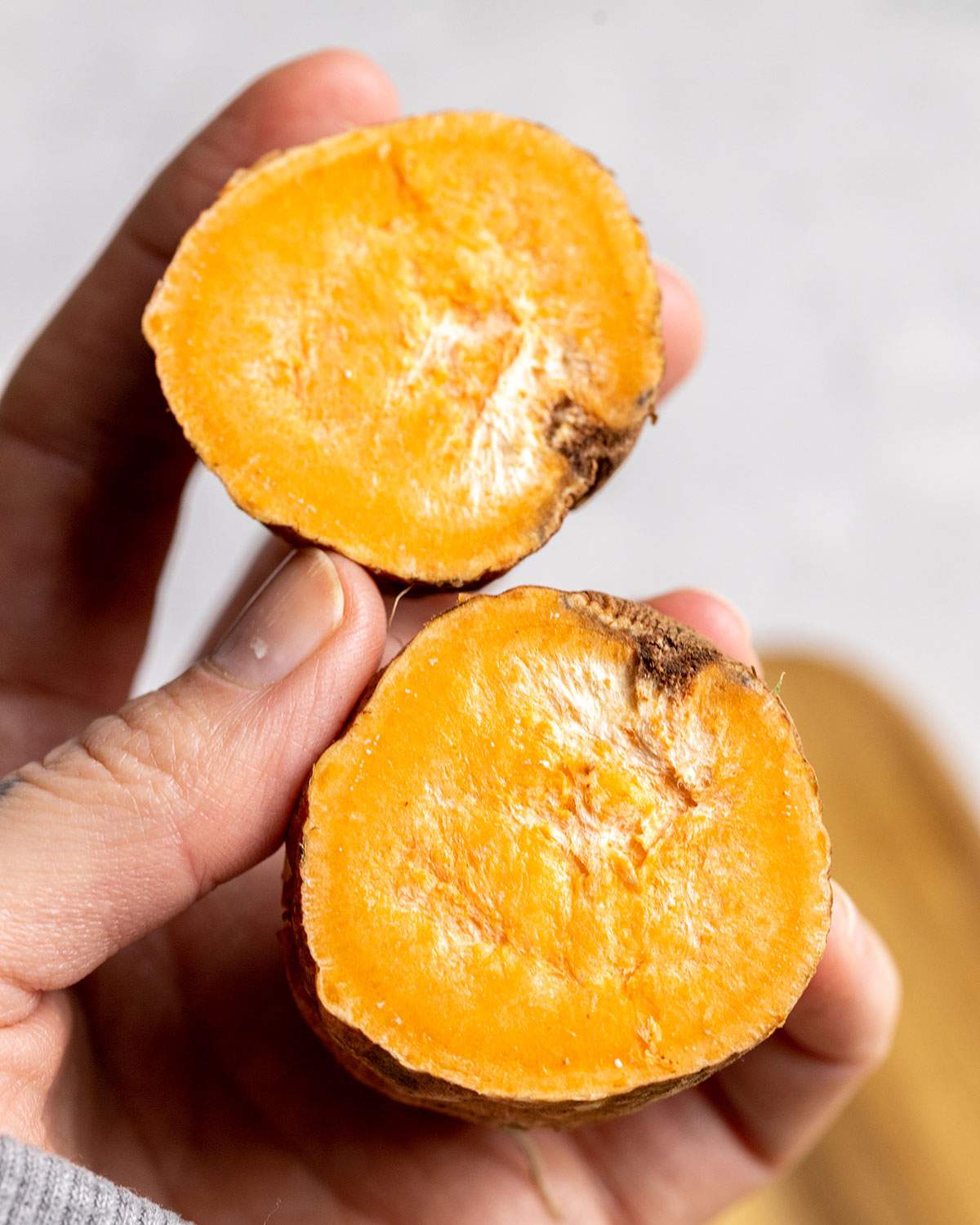
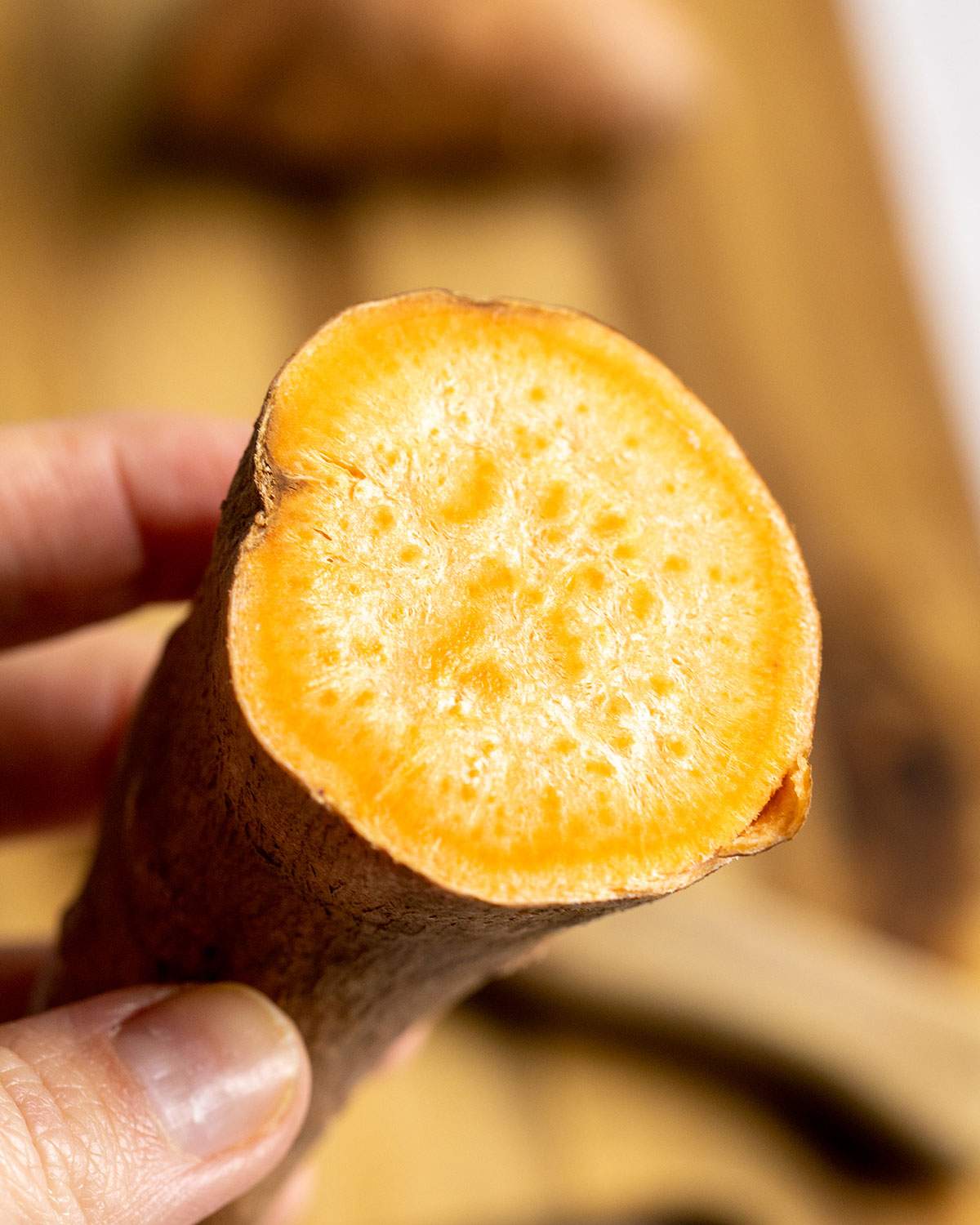
- Smell: A musty, rotten, or unpleasant odor is a clear sign of rotting. If it smells funky, toss it out.
- Mold or Weird Growth: Mold or unusual growths on the sweet potato are a definite sign of spoilage.
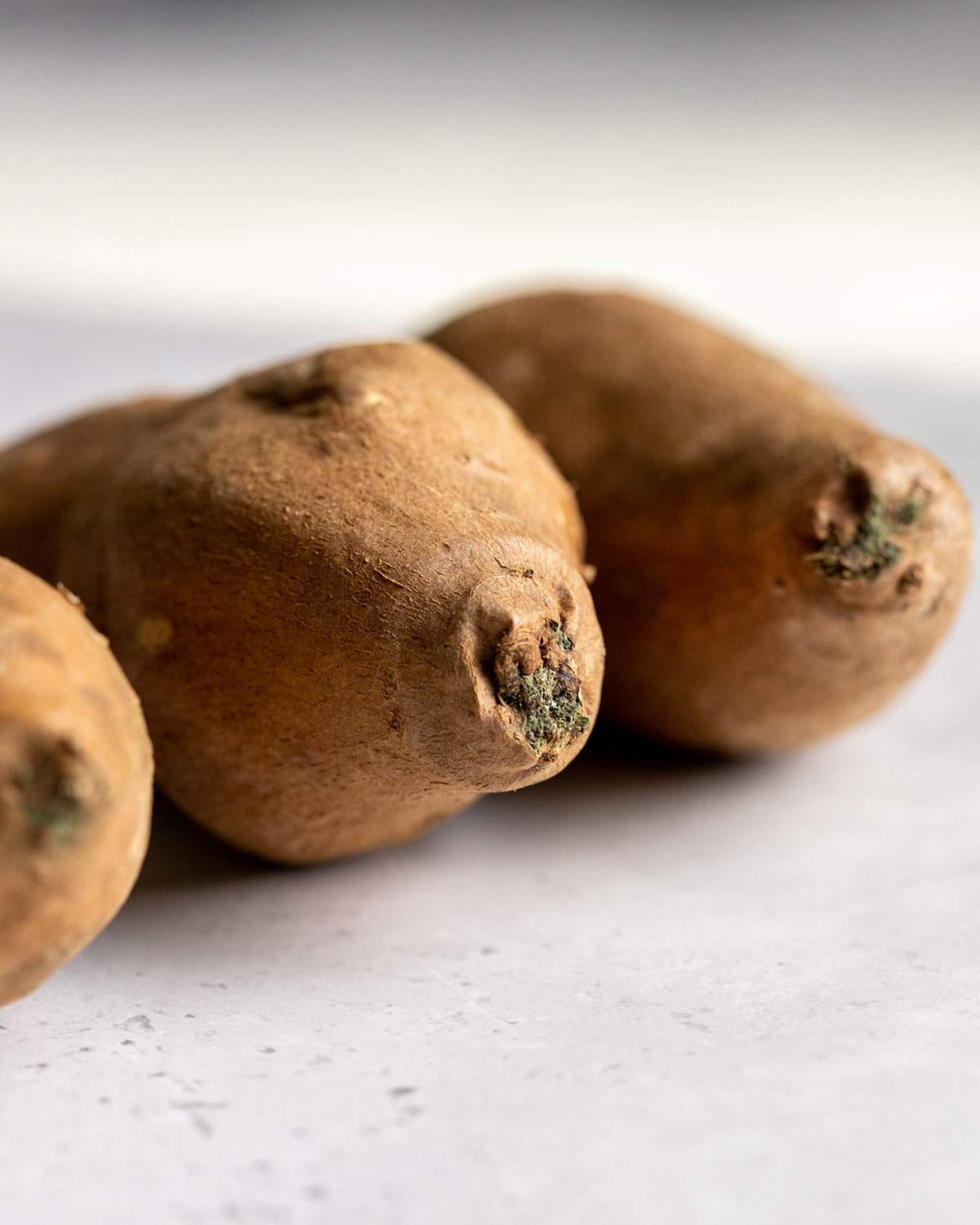
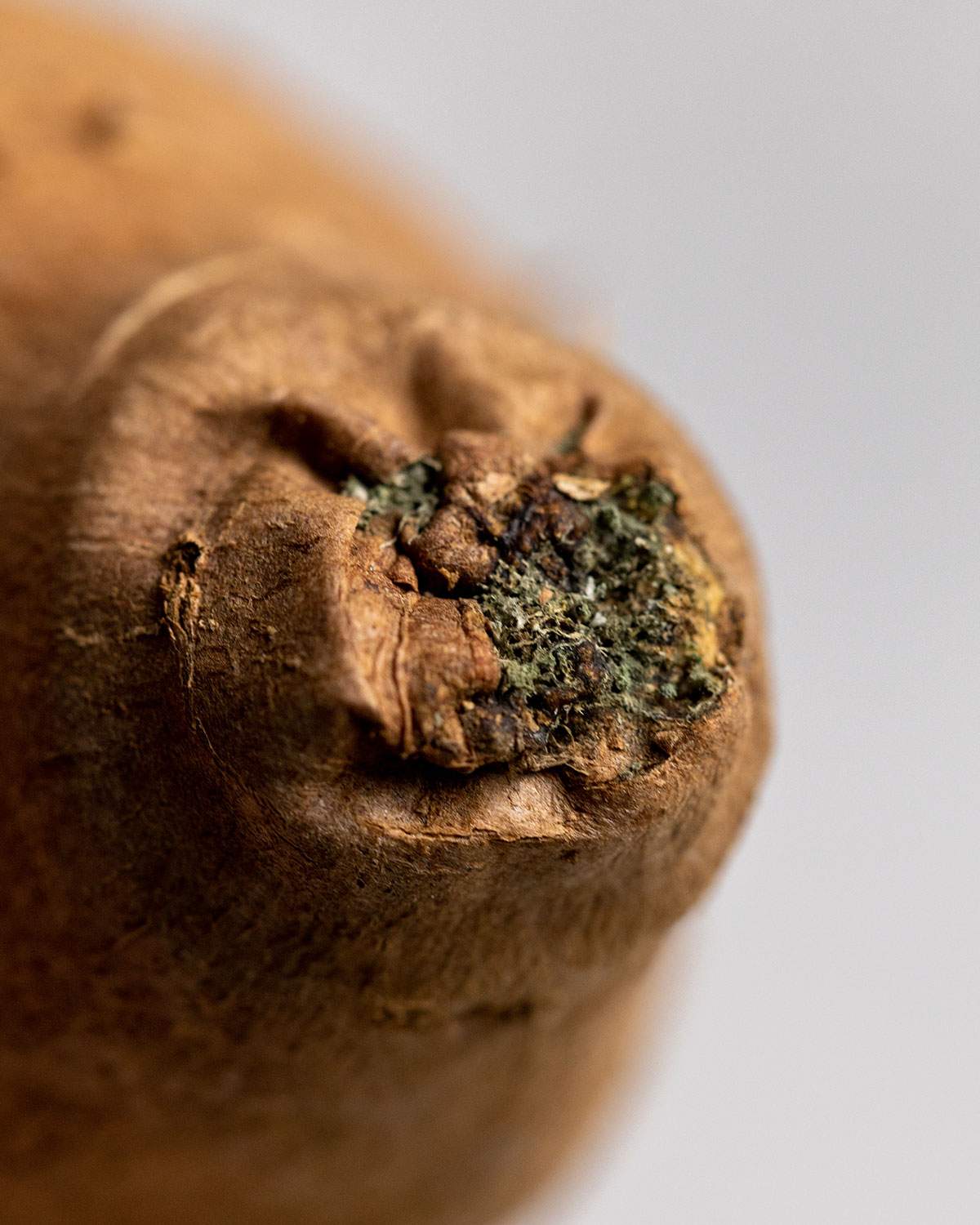
If your sweet potato exhibits any of these signs, it's safest to discard it to avoid the risk of food poisoning.
Black Spots or Wrinkly Ends
If your sweet potato has black spots or dark spots or lightly wrinkly ends, it may be a sign of mold or decay. It's best to cut off any affected areas and discard them. If the majority of the sweet potato is still good, you can still use the remaining parts.
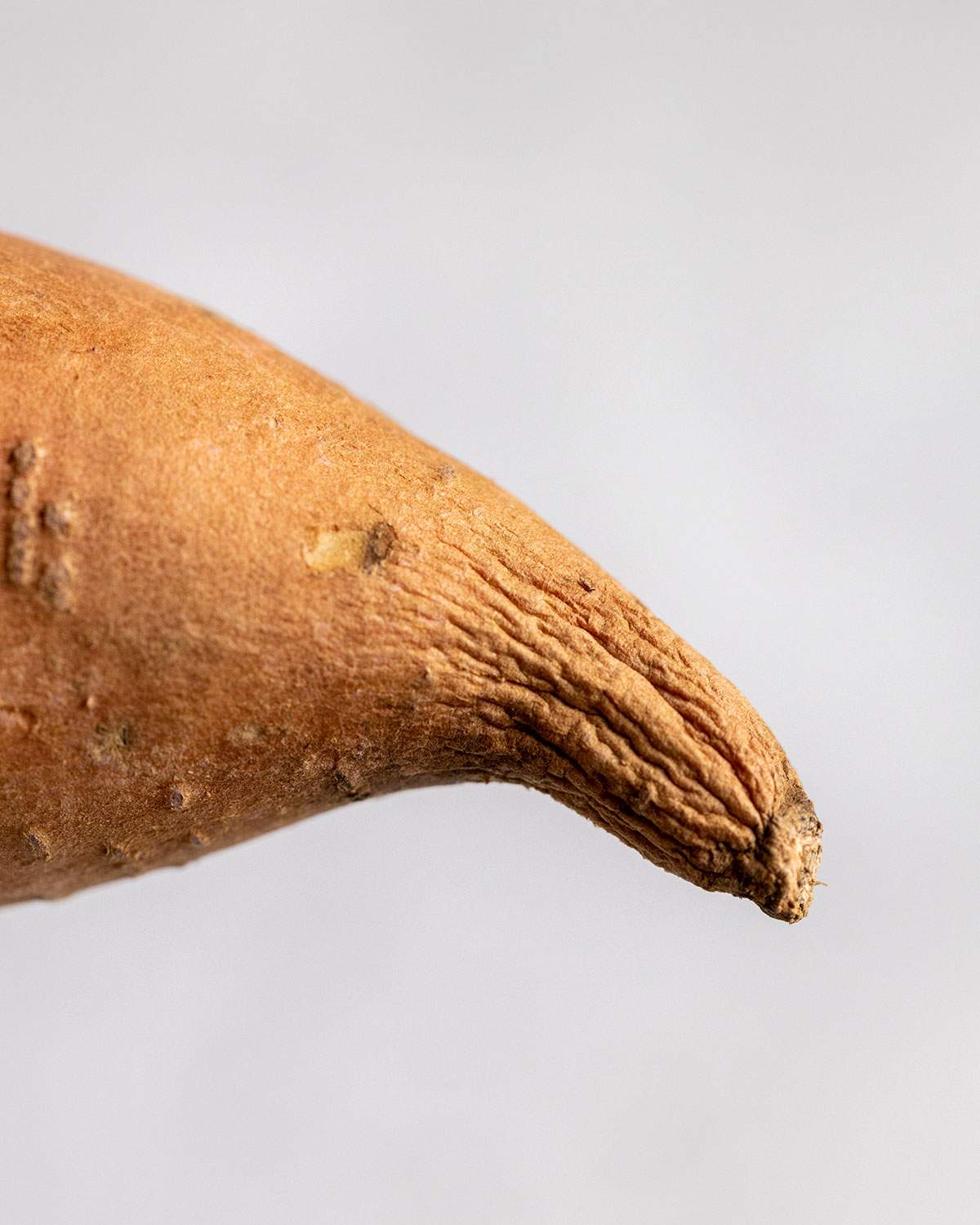
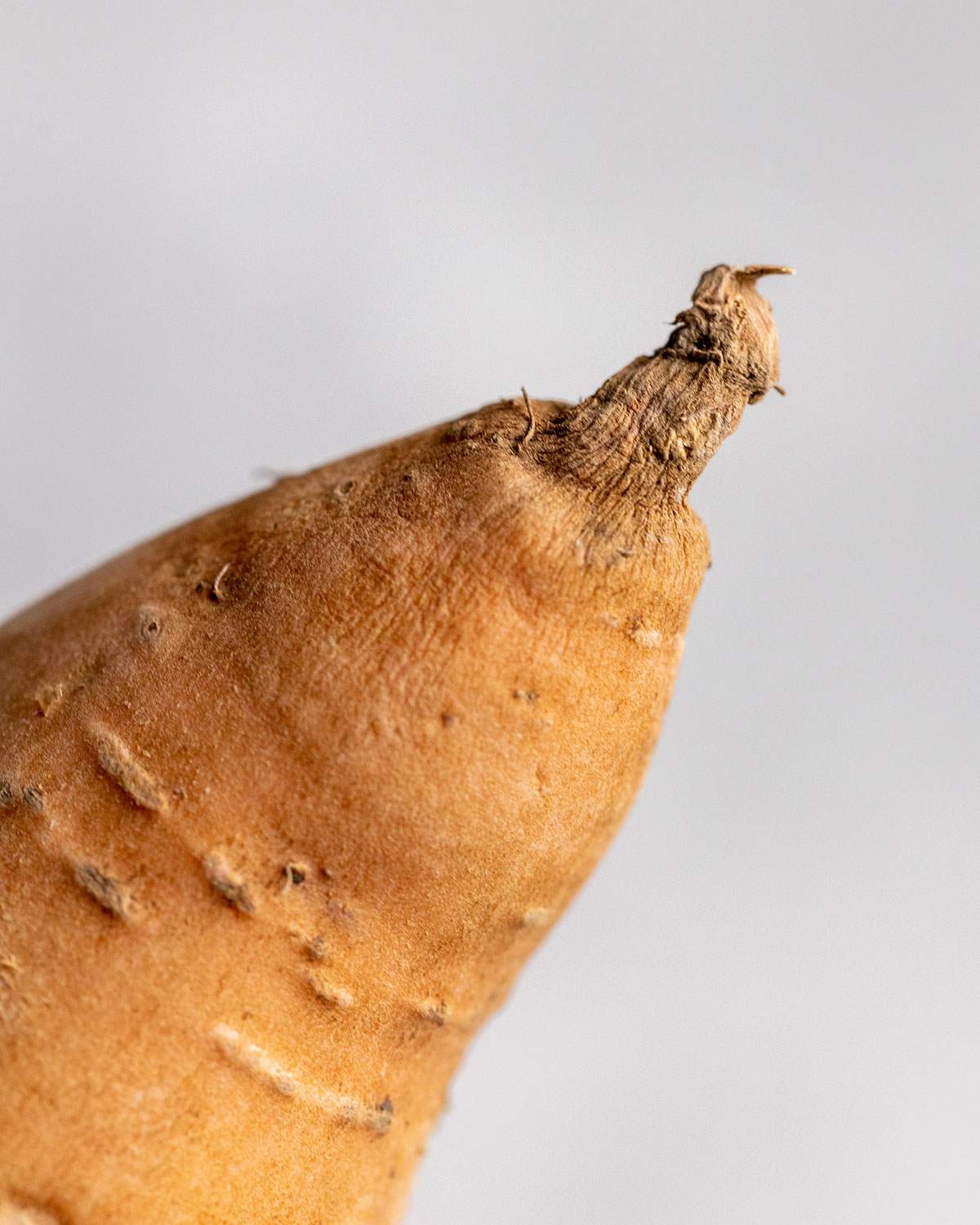
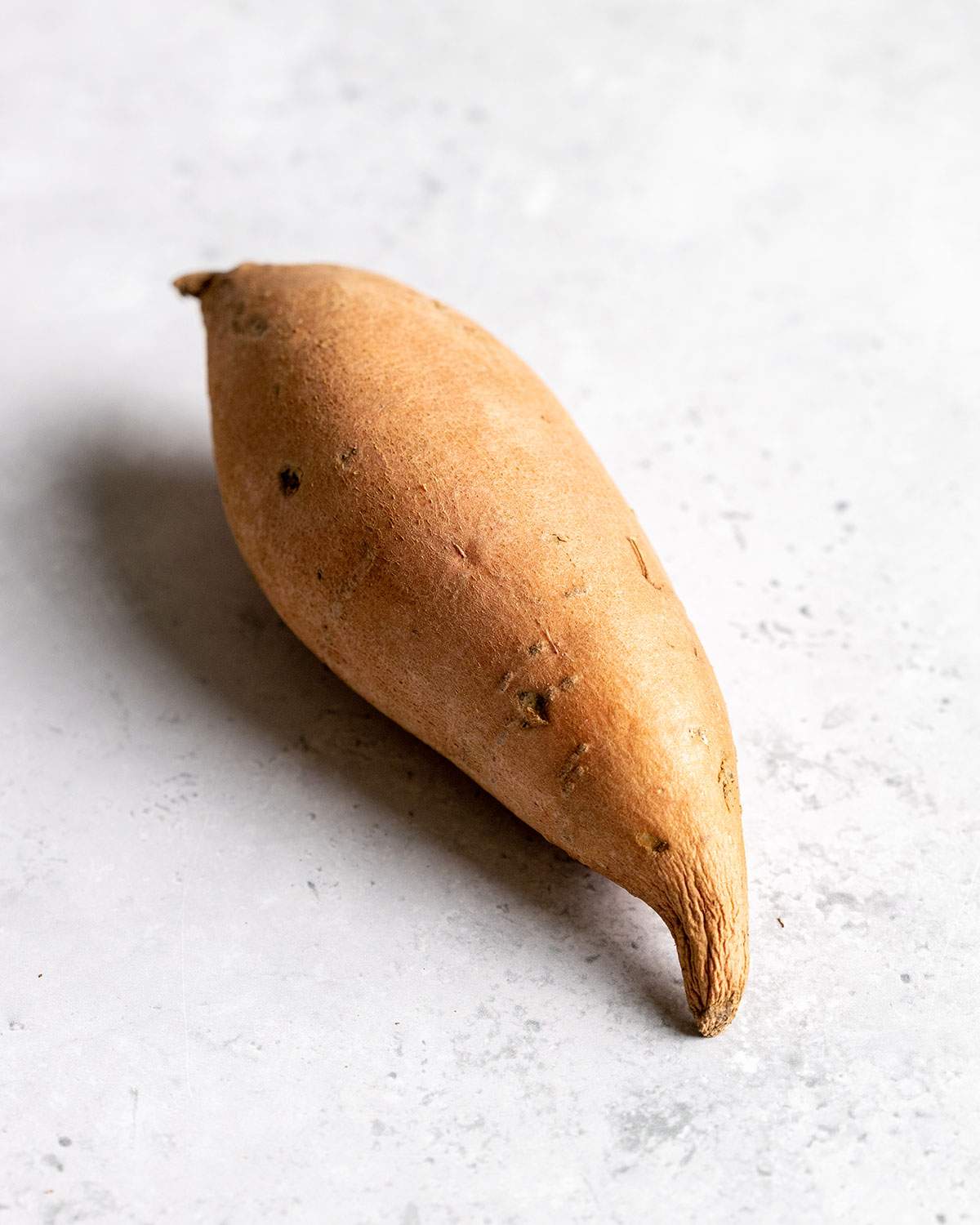
However, it's important to check the rest of the sweet potato for any additional signs of spoilage, such as softness or a foul odor. It's always better to err on the side of caution and discard any sweet potatoes that show signs of spoilage to avoid getting sick. When in doubt, throw it out!
White Spots in Sweet Potatoes
If you notice white spots inside your sweet potato, you might be wondering if it's still safe to eat. These white spots can be caused by a few different things:
- Starch Concentrations - Small white spots or patches are often just concentrated areas of starch, which are completely harmless and safe to eat. These naturally occur in sweet potatoes.
- Pithy Tissue - Sometimes white spots appear as the sweet potato ages. This is called "pithiness" and results in a drier, spongier texture with white patches. While not harmful, the taste and texture may be less appealing.
- Mold Growth - If the white spots are fuzzy, growing on the surface, or have an off smell, this indicates mold. Moldy sweet potatoes should be discarded immediately.
When examining white spots, use both visual cues and your sense of smell. If the sweet potato smells normal and the white spots appear to be internal starch spots, it's usually fine to eat. However, if there's any doubt or if the white areas are accompanied by other signs of spoilage like softness or an off smell, it's best to discard the sweet potato.
Remember: if the white spots appear alongside other signs of spoilage mentioned above, it's safest to throw the sweet potato away rather than risk food poisoning.
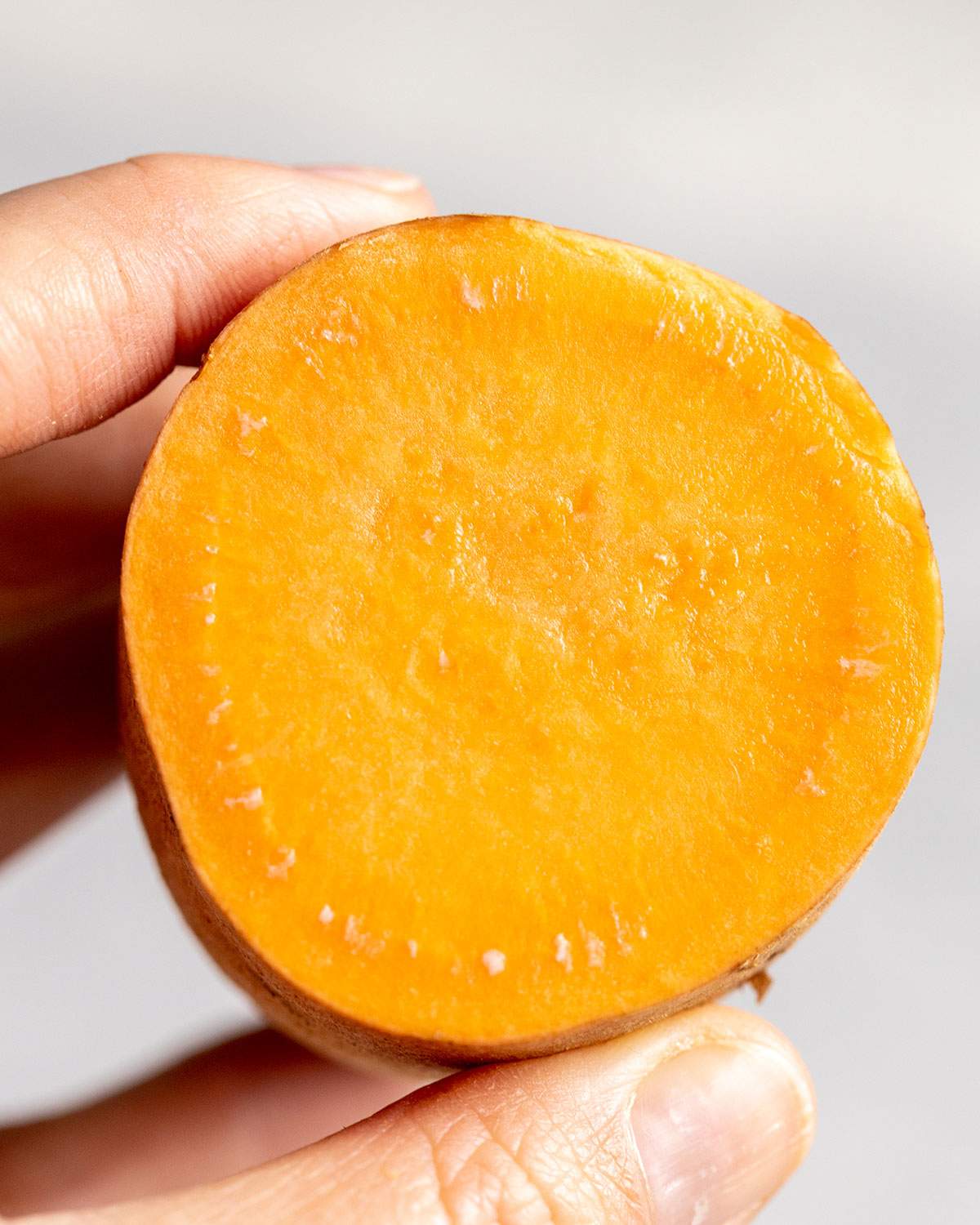
A good sweet potato on the inside.
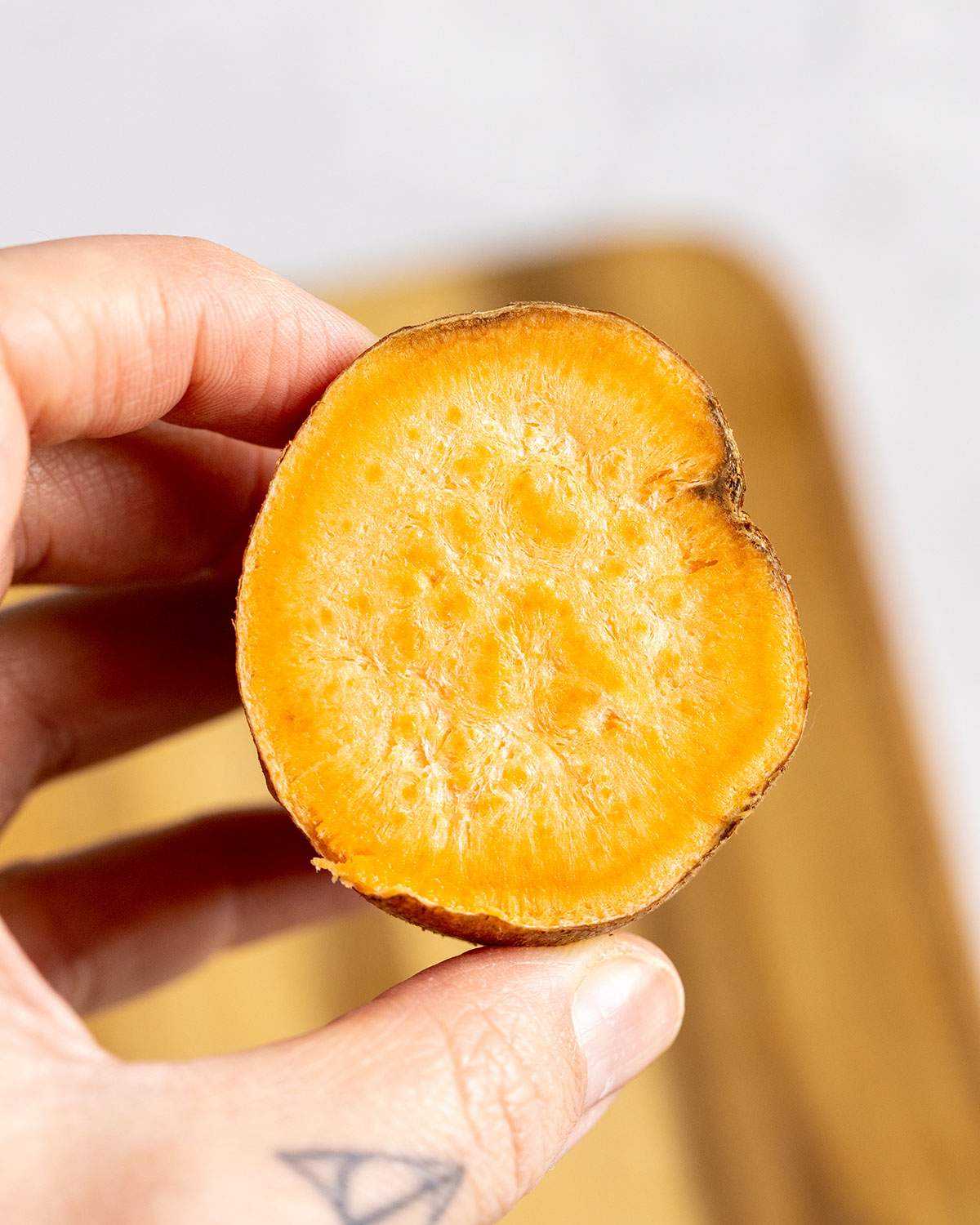
A spoilt sweet potato on the inside.
Sprouted Sweet Potatoes
If your sweet potato has sprouted, remove the sprouts before eating. They can taste bitter and may contain toxins.
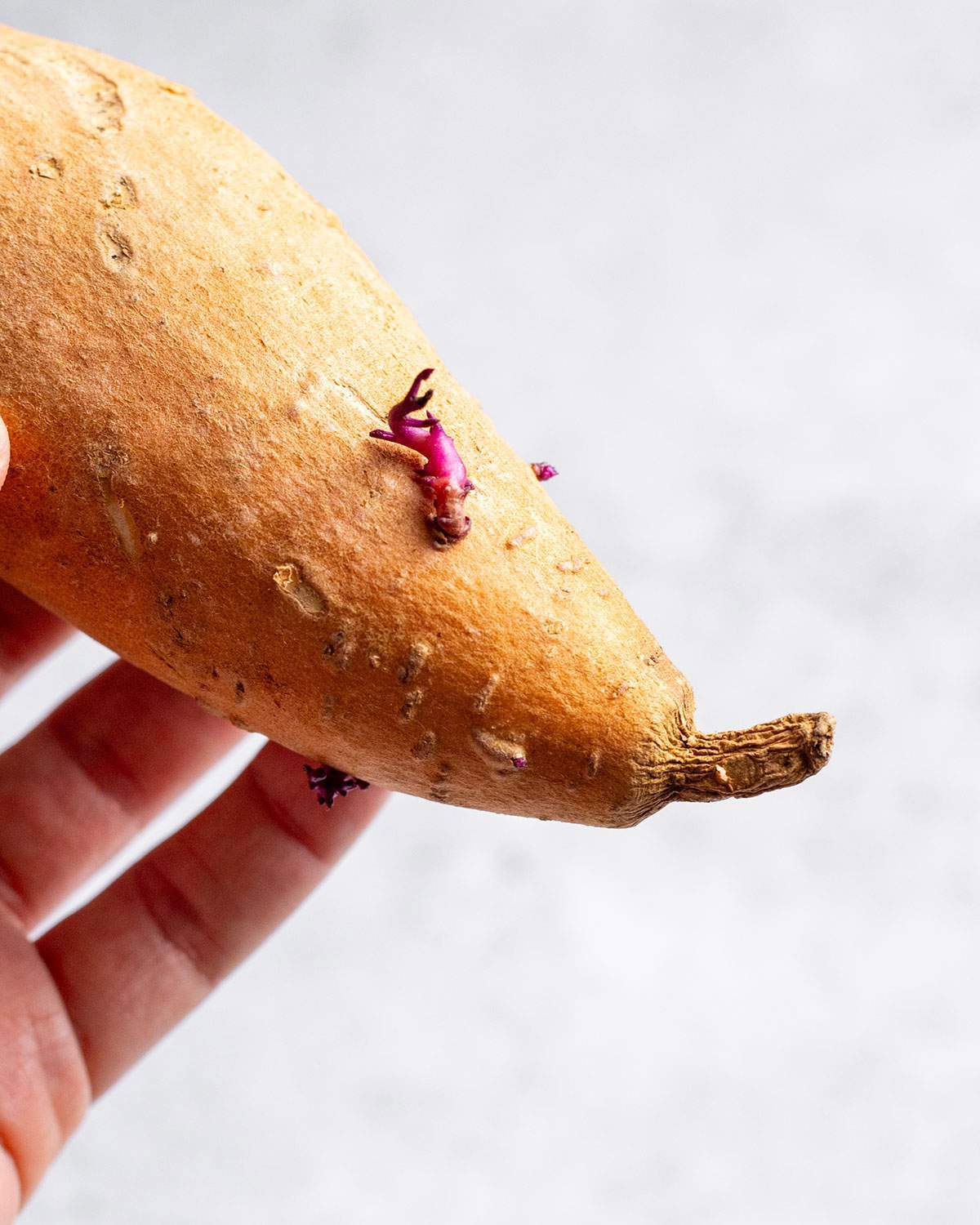
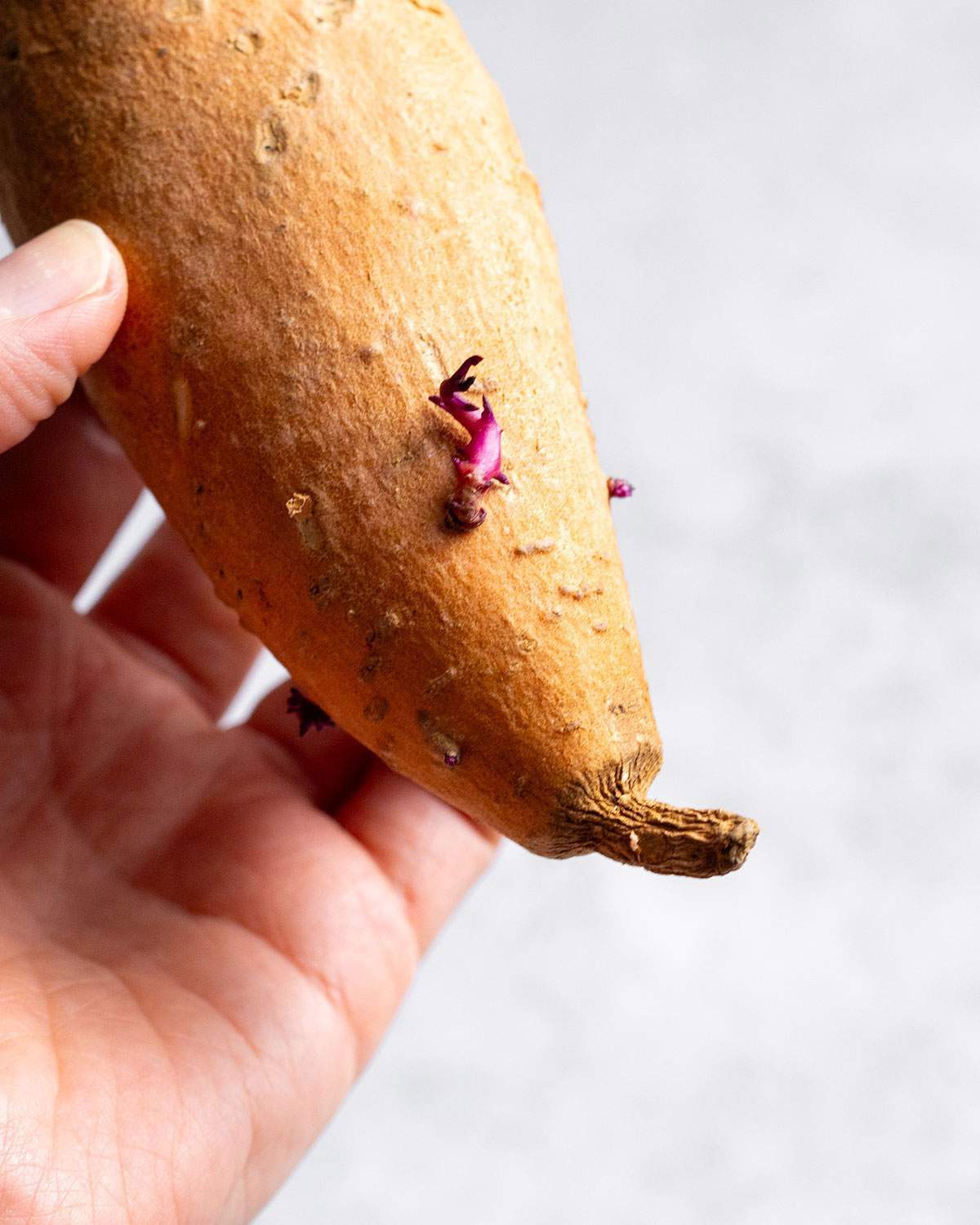
💡 What to Do With a Bad Sweet Potato
If you discover a spoiled sweet potato, discard it immediately. Never try to salvage parts of the sweet potato that show signs of spoilage. It's best to dispose of spoiled sweet potatoes in your trash or compost bin.
What Happens If You Eat a Bad Sweet Potato
Eating a bad sweet potato can lead to food poisoning, which isn't fun for anyone. Symptoms of food poisoning can emerge a few hours to several days after eating a spoiled sweet potato and may include nausea, vomiting, watery or bloody diarrhea, abdominal pain, cramps, and fever. In severe cases, symptoms might also include chills, weakness, muscle aches, and sweating. Not worth the risk!
While most people recover from food poisoning within a few days, in some severe cases, it might require medical attention or hospitalization. It's always best to seek medical advice.
All in all, the risk of potential illness and discomfort far outweighs the benefits of consuming a questionable sweet potato. It's always best to err on the side of caution and discard any sweet potatoes that show signs of spoilage.
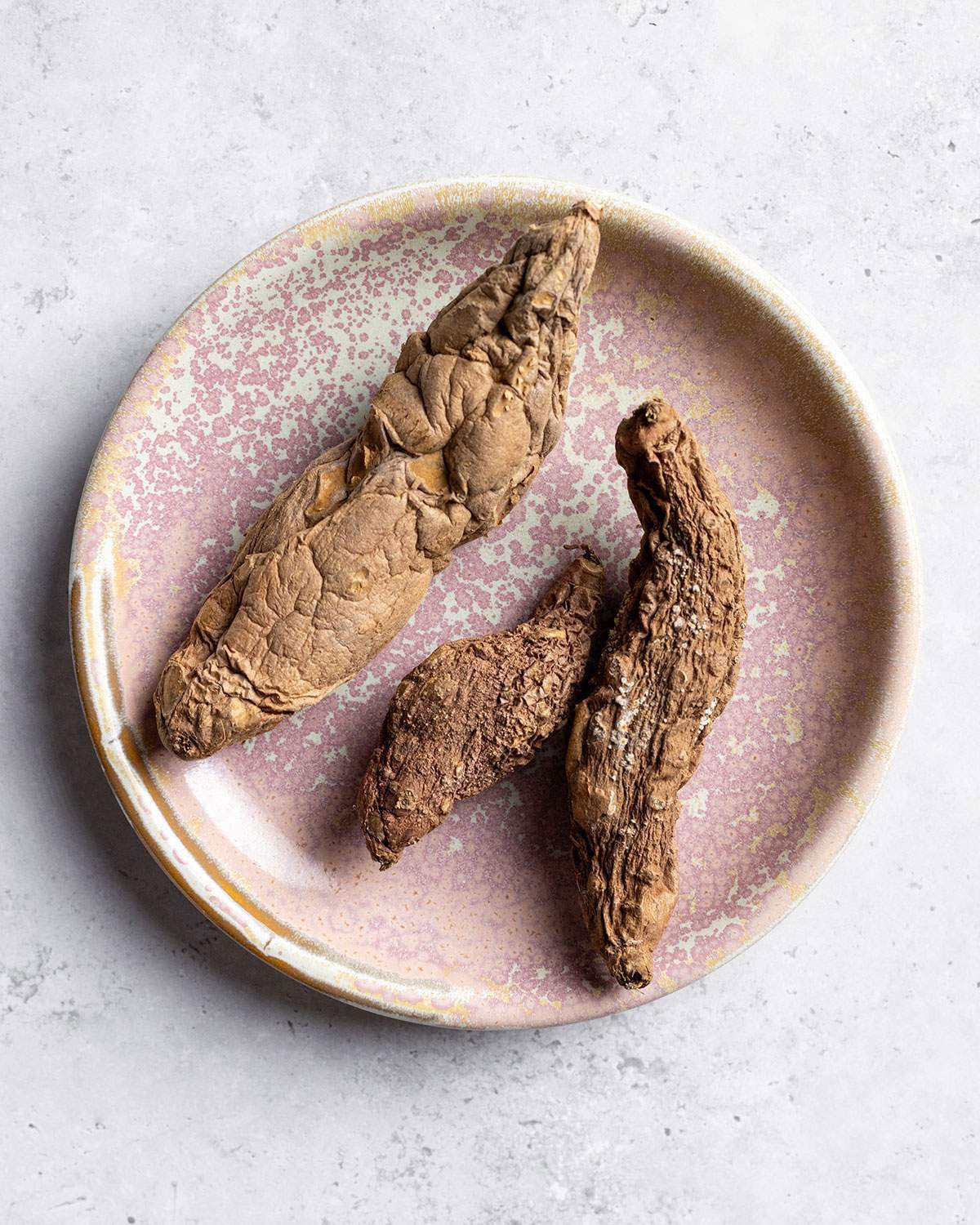
✅ Best Practises for Buying Sweet Potatoes
When buying raw sweet potatoes, look for sweet potatoes that are firm, smooth, and free from any bruises or blemishes. Avoid sweet potatoes that have any signs of mold or decay.
🧺 Best Ways to Store Sweet Potatoes
To prevent your sweet potatoes from going bad, it's important to store them properly. Here are some tips for storing fresh sweet potatoes:
- Dry Place: Store sweet potatoes in a cool, dry area away from direct sunlight and moisture. A pantry or cupboard is the best option.
- Paper Bag: To keep sweet potatoes fresh longer, store them in a paper bag. This allows for air circulation, which helps prevent moisture build-up.
- No Refrigeration: Sweet potatoes should not be stored in the refrigerator, as the cool temperature can alter their taste and texture.
- No Storing with Other Produce: Sweet potatoes should not be stored with other produce, as they release ethylene gas that can cause other produce to go bad more quickly.
- Do Not Wash: Do not wash sweet potatoes before storing. They should be kept dry until ready to use.
It's best to store sweet potatoes in a dry, cool, and dark place. The ideal temperature is between 55-60°F (12-15°C). This can be achieved by storing sweet potatoes in a pantry or cupboard away from direct sunlight.
🗓️ Shelf Life
When stored correctly, sweet potatoes can have a relatively long shelf life. Whole sweet potatoes can last up to three to five weeks at room temperature. Cut sweet potatoes should be stored in an airtight container in the refrigerator and consumed within four days.
Moreover, organic sweet potatoes are the best quality and have a longer shelf life compared to conventional ones.
If you have excess sweet potatoes that you cannot consume within their shelf life, you can freeze them for later use. Freezing uncooked sweet potatoes is not recommended as they may lose their texture and flavor during the freezing process. However, cooked sweet potatoes freeze well and can be reheated for later use.
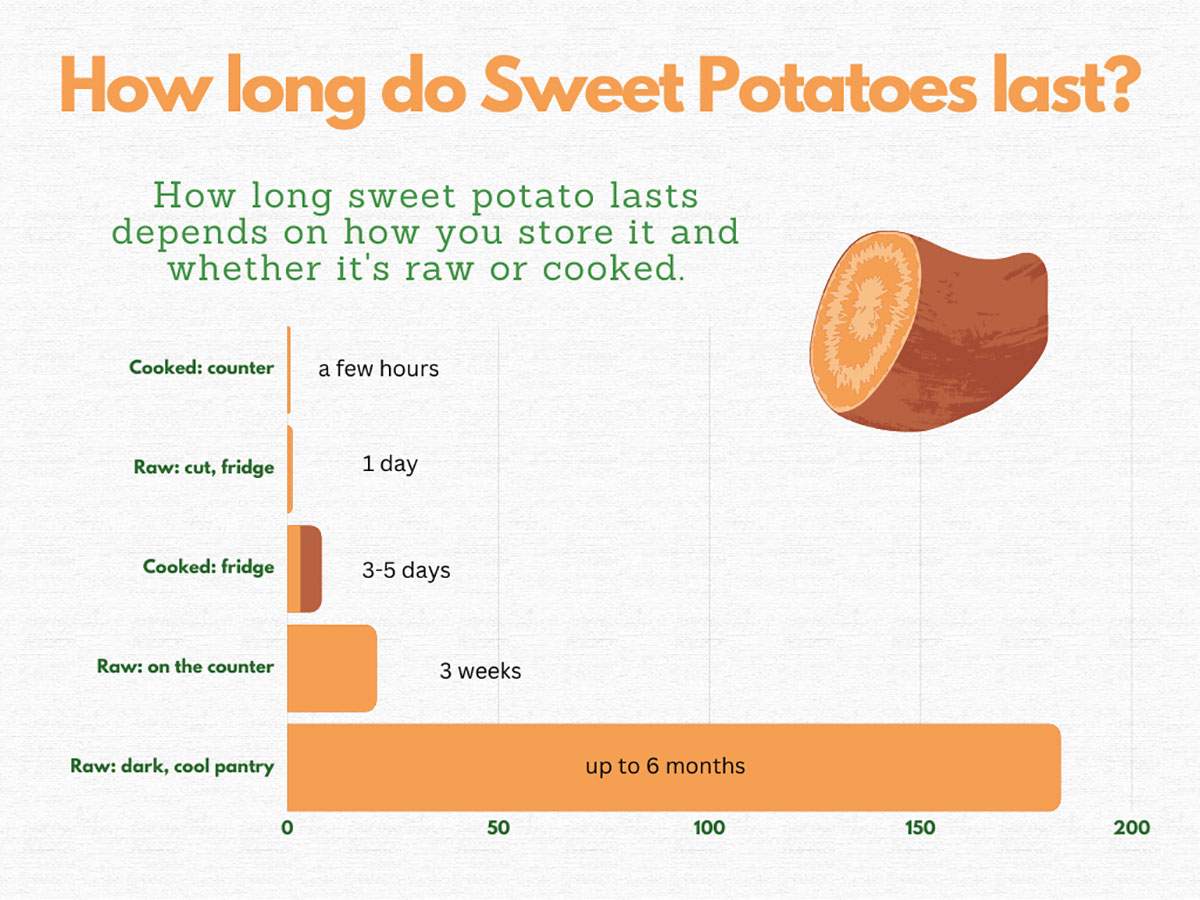
❄️ How To Freeze
To freeze sweet potatoes, cut them into small pieces and place them in a freezer-safe container. You can also add a squeeze of lemon juice to prevent discoloration. For best results, use the frozen sweet potatoes within six months.
💭 Frequently Asked Questions
Consuming a spoiled sweet potato can lead to food poisoning with symptoms including nausea, vomiting, diarrhea, abdominal pain, cramps, and fever. In severe cases, you might experience chills, weakness, muscle aches, and sweating. While most people recover within a few days, some cases may require medical attention. It's always best to discard sweet potatoes showing any signs of spoilage rather than risk getting sick.
Sweet potatoes with sprouts can still be eaten, but you should remove the sprouts first. The sprouts can taste bitter and may contain toxins. As long as the rest of the sweet potato looks and smells normal without any other signs of spoilage, it's generally safe to consume after removing the sprouts.
To check if a sweet potato is bad inside, cut it open and look for discoloration, dark spots, or an unusual texture. A good sweet potato should have a consistent color throughout. If you notice black spots, unusual discoloration, or if the flesh feels mushy, these are signs that the sweet potato has gone bad and should be discarded.
Yes, sweet potato poisoning can make you sick if you consume a spoiled sweet potato. The symptoms can range from mild to severe digestive issues including nausea, vomiting, diarrhea, and abdominal pain. To avoid sweet potato poisoning, always check for signs of spoilage before consumption and properly store your sweet potatoes.
White spots in sweet potatoes can indicate different things:
- They might be harmless starch concentrations that are safe to eat.
- They could be pithy tissue that appears as the sweet potato ages, resulting in a drier texture.
- If the white spots are fuzzy or have an off smell, they indicate mold growth, and the sweet potato should be discarded.
Use both visual inspection and your sense of smell to determine if the sweet potato with white spots is safe to eat.
When stored correctly in a cool, dry, dark place with temperatures between 55-60°F (12-15°C), raw sweet potatoes can last for 3-5 weeks. For best quality, store them in a paper bag to allow air circulation, keep them away from direct sunlight, and avoid refrigeration as cool temperatures can alter their taste and texture.
If your sweet potato has small black spots, it may be possible to cut away the affected areas and use the rest of the potato if it appears healthy. However, if there are extensive black spots, softness, or a foul odor, it's best to discard the entire sweet potato. Always prioritize food safety - when in doubt, throw it out!
The three most common types of sweet potatoes differ in flavor, texture, and sweetness:
- Orange sweet potatoes are widely available with a sweet, creamy flavor
- White sweet potatoes have a drier texture and are less sweet
- Purple sweet potatoes are the sweetest variety with a more dense texture
Experimenting with different types can add variety to your recipes and help you discover which you prefer.
Extra Tips for Using Up Sweet Potatoes
If you have sweet potatoes that are nearing the end of their shelf life, here are some tips for using them up:
- Roast Them: Roasting sweet potatoes brings out their natural sweetness and can be a delicious side dish or snack. Sweet potato fries are also a great way to use up sweet potatoes.
- Make Soup: Sweet potato soup is a comforting and nutritious meal that can be made with just a few ingredients.
- Bake Them: Sweet potatoes can be baked and topped with your favorite toppings for a tasty and filling meal.
Sweet potatoes are a fantastic ingredient to experiment with in the kitchen. They're not only delicious but also packed with nutrients. By knowing how to spot a bad sweet potato and how to store them properly, you can enjoy their many benefits without worrying about spoilage.
Remember, always discard any sweet potatoes that show signs of spoilage, and try to use your sweet potatoes before they go bad. Enjoy the versatile and nutritious sweet potato without waste or worry!
Try These Sweet Potato Recipes
© 2025 Romy London / Romina Callwitz | All images, videos, wordings and content are copyright protected and belong to Romina Callwitz. Please do not use any of my content without prior permission. If you wish to re-publish any (part of my) content, please get in touch via email. Thanks for your support!
*Disclosure: This page may contain affiliate links and sponsored links that earn me a small commission, at no additional cost to you. You can find more information in my Privacy Policy.


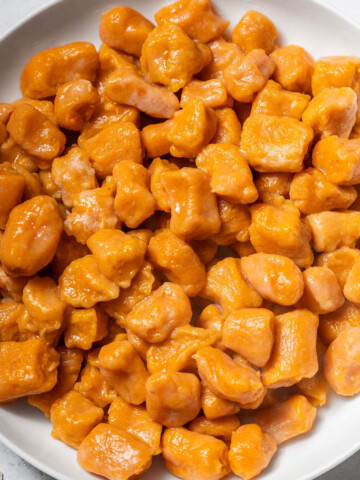

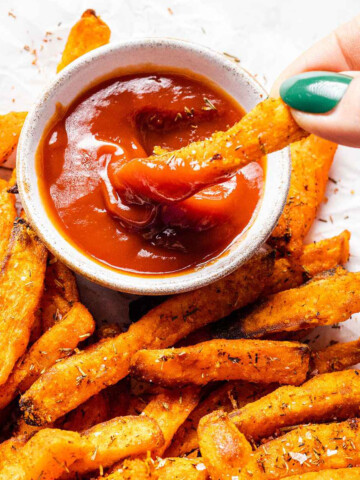
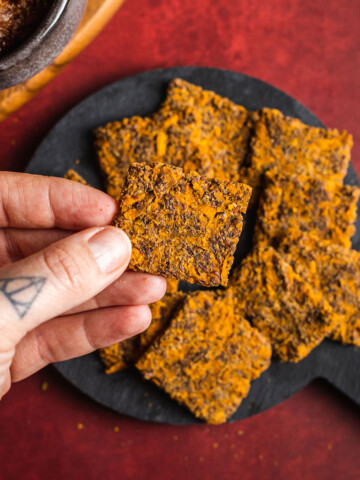
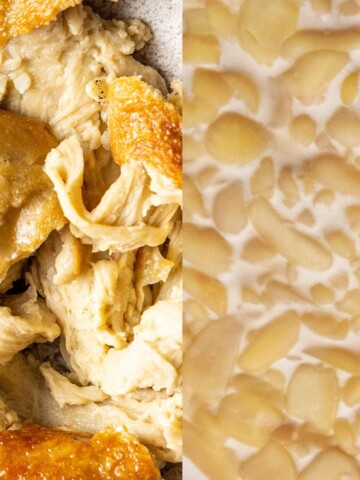
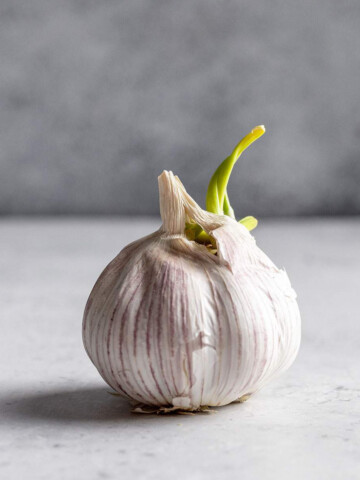
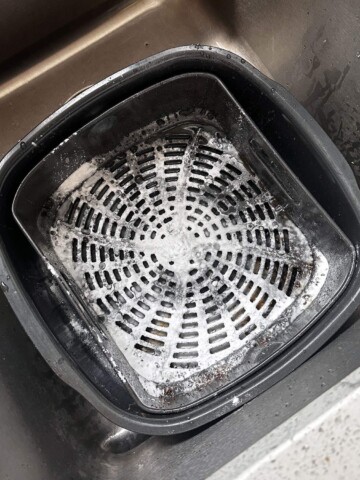
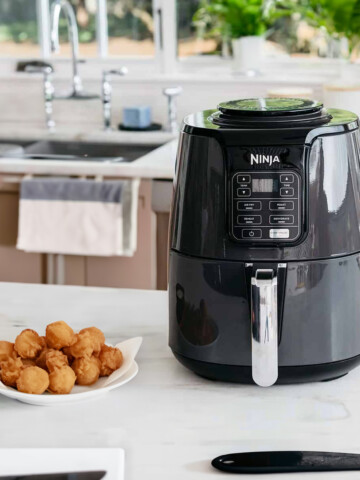
💭 Leave a Comment